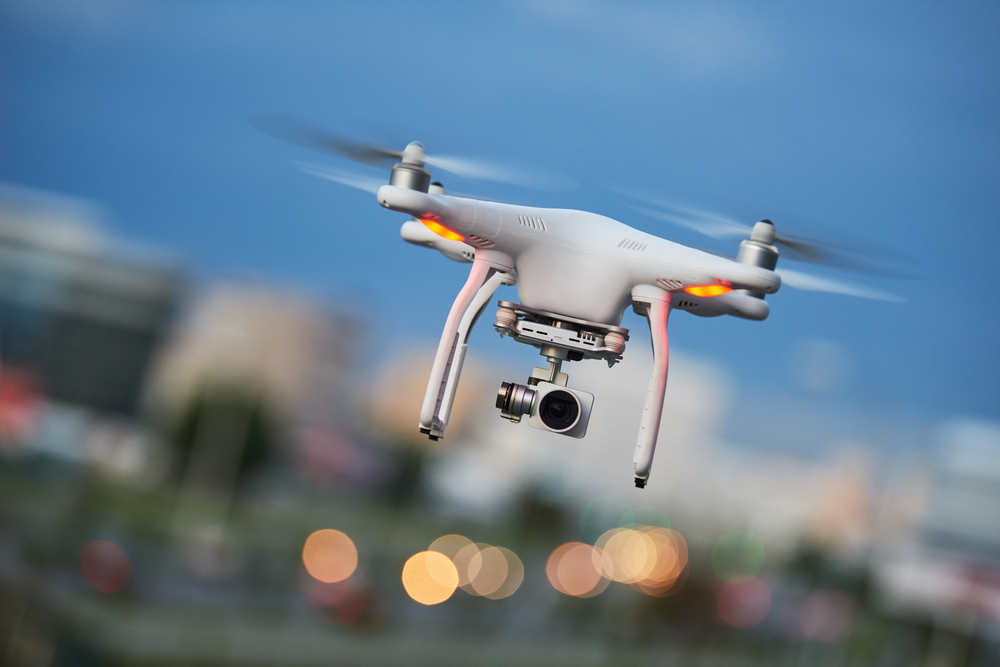Government touts new measures to crack down on malicious drone usage
A 5km exclusion zone and new stop and search laws are being devised to prevent drone-related disasters like Gatwick


The government has agreed a fresh 'safety partnership' between the aviation regulator and drone makers in its latest attempt to mitigate any fallout from the Gatwick drone debacle.
New laws are also being formally announced today to extend the 'no-fly' zone around airports from 1km to 5km, after the government published findings of a consultation which ran from July to September last year.
The new exclusion zone will ban drone flight within 5km of runway ends and will come into force from 13 March this year. This is in addition to a Drones Bill that's currently being developed, which will give police the power to stop and search people suspected of maliciously using a drone above 400ft or 5km of an airport.
The Civil Aviation Authority's (CAA) 'drone code' also advises people on the rules and regulations surrounding the use of drones, and warns users that endangering the safety of an aircraft warrants a prison sentence for up to five years.
"The law is clear that flying a drone near an airport is a serious criminal act," said the transport secretary Chris Grayling. "We're now going even further and extending the no-fly zone to help keep our airports secure and our skies safe.
"We are also working to raise awareness of the rules in place. Anyone flying their drone within the vicinity of an airport should know they are not only acting irresponsibly, but criminally, and could face imprisonment."
The Home Office is also reviewing the current set of measures at disposal to authorities in countering the malicious use of drones with respect to the UK's critical national infrastructure. This includes exploring a host of technological options at disposal.
Get the ITPro daily newsletter
Sign up today and you will receive a free copy of our Future Focus 2025 report - the leading guidance on AI, cybersecurity and other IT challenges as per 700+ senior executives
Ministers last month met with the heads of UK airports to construe plans to prevent the continued use of drones in a such as way that wreaked havoc at Gatwick Airport over Christmas and grounded more than 1,000 flights.
Drone companies, such as Yuneec, have touted a range of innovations that could have mitigated the crisis, including the deployment of ID radio scanning, that can allow authorities to scan drones and find the identity of their owner remotely.
Hong Kong-based manufacturer DJI, meanwhile, said last month that it had been developing its own drone ID system that could allow security staff to remotely see the serial number and location of the pilot.

Keumars Afifi-Sabet is a writer and editor that specialises in public sector, cyber security, and cloud computing. He first joined ITPro as a staff writer in April 2018 and eventually became its Features Editor. Although a regular contributor to other tech sites in the past, these days you will find Keumars on LiveScience, where he runs its Technology section.
-
 Cleo attack victim list grows as Hertz confirms customer data stolen
Cleo attack victim list grows as Hertz confirms customer data stolenNews Hertz has confirmed it suffered a data breach as a result of the Cleo zero-day vulnerability in late 2024, with the car rental giant warning that customer data was stolen.
By Ross Kelly
-
 Lateral moves in tech: Why leaders should support employee mobility
Lateral moves in tech: Why leaders should support employee mobilityIn-depth Encouraging staff to switch roles can have long-term benefits for skills in the tech sector
By Keri Allan